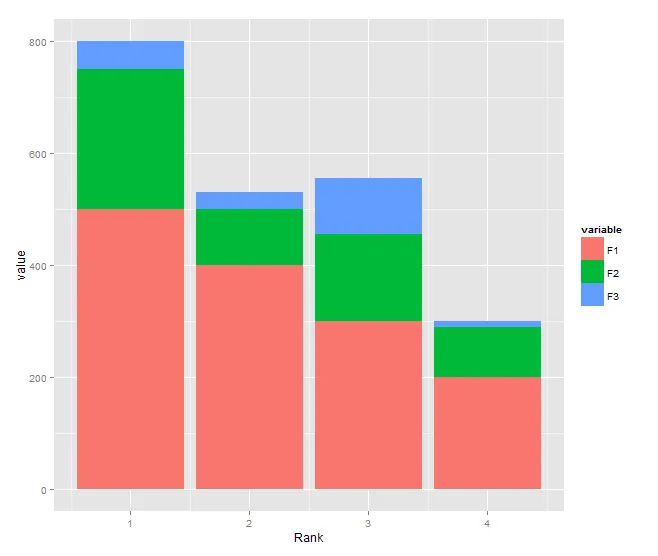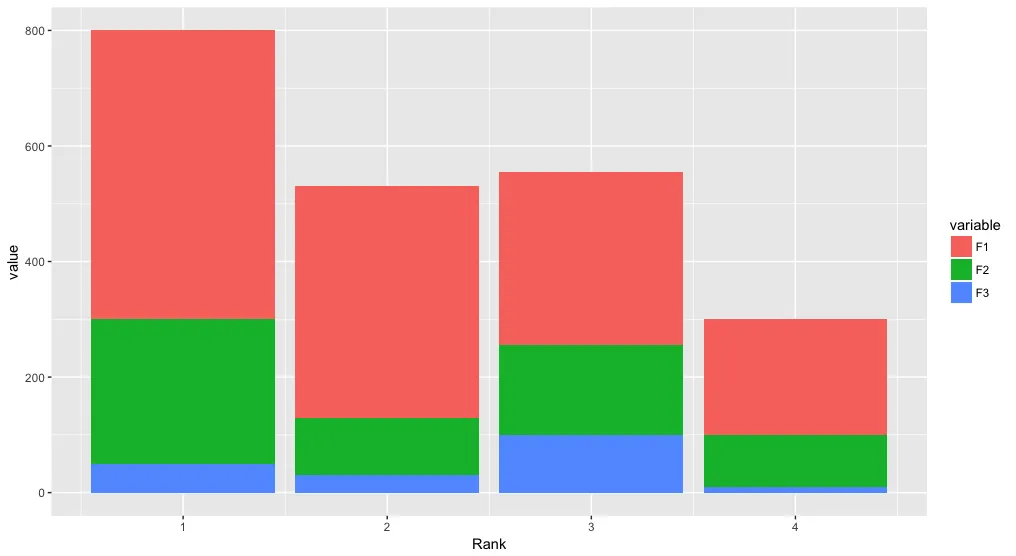我想使用ggplot2和geom_bar创建一个堆积图。
这是我的源数据:
这是我的源数据:
Rank F1 F2 F3
1 500 250 50
2 400 100 30
3 300 155 100
4 200 90 10
我希望得到一个堆积图,其中x轴为排名,y轴为F1、F2和F3的值。
# Getting Source Data
sample.data <- read.csv('sample.data.csv')
# Plot Chart
c <- ggplot(sample.data, aes(x = sample.data$Rank, y = sample.data$F1))
c + geom_bar(stat = "identity")
这是我可以做到的最好程度了。我不确定如何堆叠其余的字段值。
也许我的数据框格式不太好?

